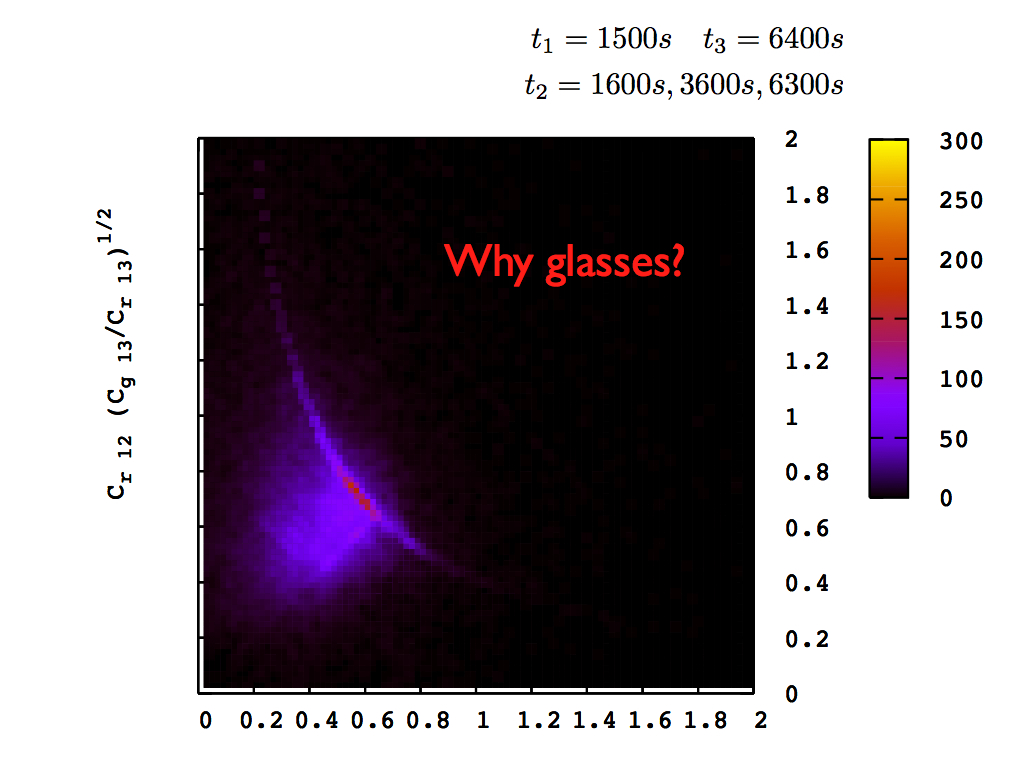
Why glasses?


Why glasses? The answer to this question has been the focus of much research effort for long. It is certainly a rather
difficult question, and there have been a number of ideas lined up for trying to understand how material systems become glassy. It is not even clear whether in many systems there is a thermodynamic phase one can call glass, or there is simply a dynamical crossover at low enough temperatures.
Do we need to fully answer why glasses? before we really further our understanding of glassy dynamics? In our work, we take the point of view that, by starting from the fact that glassy systems exist (as nature presents us with concrete examples), we can then attempt to characterize whatever possible universal properties there are in glassy dynamics.
The approach we take relies on the following philosophy:
we do not claim any theory of the glass transition, and we do not attempt to answer why glasses? with this particular approach. Our theory does not allow us to make non-universal predictions, such as what the glass transition temperature is (if one can be defined) for a certain material, or whether the material displays glassy behavior at all. We aim at understanding if there is a set of principles, guided by symmetry considerations, that can be used to understand certain universal aspects of glassy dynamics once the glass state is presented. For example, glasses age. We thus expect that there exists a unified approach to describe aging phenomena, and we seek some guiding principles, based on dynamical symmetries, that could allow us to understand universal properties in the aging regime, including the scaling of spatial heterogeneities.
For a review of this approach, see
Fluctuations in glassy systems
Claudio Chamon and Leticia Cugliandolo
J. Stat. Mech. (2007) P07022
JSTAT special issue `Principles of Dynamical Systems'
and references therein, for work in collaboration with Malcolm Kennett, Horacio Castillo, Jose Luis Iguain, Patrick Charbonneau, David Reichman, and Hajime Yoshino